|
I've talked before on here about my love of Crystal Cove Online, an Internet game designed by Cartoon Network as a companion to Scooby-Doo! Mystery Incorporated. For those unfamiliar with the game and haven't read my past posts on this, essentially the game adapted each Mystery Incorporated episode into a video game level. This included creating "minions" for each of the villains for the player to have to defeat, which weren't in the episodes. This was always one of my favorite parts of playing the level each week, because sometimes the side-enemies would be really creative and interesting. Recently, I was quite excited when a friend and frequent visitor of the blog, Grumpydrawer, sent me the final sprite images of each of the different minions and villains found via the game's files in Flashpoint. In the game, the minions show up briefly and move quickly to attack you, so it's a bit tough to make out certain features of their designs. These images of each of the minions allow you to see their designs in great detail. To my knowledge, these designs have never been shared online before, and this is the first time they're being posted in high-quality. I wanted to share these images with you all, as I think they are really cool, and was amazed by the level of detail put into them. I particularly think the shrunken head looks really frightening and gruesome for something in Scooby-Doo. The minions are listed in order of the episodes. Note that "A Haunting in Crystal Cove" is the only level to have two different types of minions, which are living bear rugs and haunted chairs. "Escape from Mystery Manor" re-uses the rats from "Beware the Beast from Below" as minions. There are also a few minions that don't appear in levels, but are still in the game, which include caterpillars, flies, and wasps. For some reason, the image of the fly that was found only shows it from the back. I also added Thorn's design, since the design for her was found as well. The images for each of the villains were also uncovered. While all of them were also the villains of their respective episodes, I'm including them here as well because some of them have interesting differences in coloring or design. Examples of this would include "Nightfright," where he is colored red instead of purple, and "All Fear the Freak," where The Freak's skin color is more ghoulish rather than just white. I actually like the game's design for The Freak a little better than the actual episode! In addition, because the Fish Freaks were made into minions for its respective level, the boss fight was against one larger Fish Freak, who appears to have some differences in facial features to make him look more monstrous. There are some other very minor differences as well, such as the Headless Horror looking a bit skinnier than in the episode. Other notable differences in the game adaption include that female gator monster was not a boss villain in the game, although she did show up during the unmasking and it's just said Fred, Velma and Daphne caught her off-screen. In addition, the boss fight in the "Secret of the Ghost Rig" level was against a ghost-truck driver, since the challenge of fighting a truck would likely be immense considering Shaggy's only weapon is an umbrella lol. Here are the villain images from the game: I hope you enjoyed this little blast from the past! I had a lot of fun looking through these images, and think it's so cool that these designs were discovered so they could be posted here as an archive. I don't have the page on the side menu, since the game is technically discontinued, but I did make a page on Crystal Cove Online detailing pretty much every piece of info you could ever want to know about the game. With these designs now available, I gave the page a redesign over the past few days, and I think it looks really cool with the villain and side-villain designs added. You can check the page out here.
7 Comments
As I posted about a few weeks ago, some old concept art and storyboards from SCOOB! have recently surfaced thanks to the Behind the Scoobs Instagram account. In that post, I did a brief write-up in the linked post about how the film drastically changed from what it was originally supposed to be. I was enjoying following their SCOOB! concept art while they were posting, and I was inspired to do a deeper dive on how the original film would have differed from what we ended up getting. From what I can find, there isn't one comprehensive article that tells the story of the original concept for SCOOB!, so I thought it would be fun to compile that story myself, and share it with you all through interviews, concept art and news articles. Just so it's clear, all of the concept art and other materials were found and shared previously with the fandom around the time SCOOB! came out, so I am not linking to any new information that hasn't been seen before.
Disclaimer: All of the concept art I'm linking to is all publicly available on the web and can be viewed by anyone. All concept art is owned by the individual artists and Warner Brothers-Discovery, and will be credited to the respective artists in each instance they are referenced throughout the post. To avoid any potential copyright or crediting issues, I will be linking to the places where the concept art is posted on the Internet rather than including the images directly in this post. I do not take credit for any of the concept art linked to. In addition, there is no definitive source to tell us what the movie would have been about. This is just me piecing things together based on my own interpretation of the interviews, concept art, and news articles that are out there, and I make no claims as to whether my interpretations are correct or not. If any of the artists or anyone at Warner-Brothers Discovery has any issues with me sharing links to this publicly available concept art, please don't hesitate to reach out and I will be happy to remove the links from this post. For those who don't know, SCOOB! was originally announced as far back as August 2013 via Variety. Charles Roven and Richard Suckle, who produced the first two live action movies, were set to produce the film. Matt Lieberman was the first person hired to write the script. Another announcement was later made in June 2014, sharing Randall Green had joined the writing team, and also that it would "reboot" the franchise. Early concepts featured a much more experimental tone, involving the Mystery Inc. gang joining forces with former villains to stop a larger threat. In a storyboard posted on Nassos Vakalis's art portfolio website (the third one in the second row), The Creeper joined forces with Simone from Zombie Island to stop some demonic creatures. This concept was later scrapped. On the movie's release day in 2020, Matt Lieberman shared in an interview with SyFyWire that SCOOB! originally was titled S.C.O.O.B., standing for Special Covert Organization of Otherworldly Beings. Despite the acronym being written out of the movie, the title was kept. A different interview with Matt Lieberman confirmed 80% of the basic plot of the film stayed the same in the final version; it was just the atmosphere and scenes that changed. In August 2015, it was announced that Tony Cervone would direct the film, and his wife Allison Abbate would help produce it alongside Roven and Suckle. It was also announced that Dan Povenmire would executive produce the film. In April 2016, Entertainment Weekly reported that the film could lead to a Hanna-Barbera Cinematic Universe, providing the official tagline of "our first shot at unlocking the whole Hanna-Barbera Universe." In September 2016, Dax Shepard was announced as a writer and director for the film by Variety, and the release date was announced as September 21, 2018. In May 2017, Variety reported an update that the release date would be pushed back to May 15, 2020. According to a Variety article from 2017, S.C.O.O.B. was originally supposed to be Hanna-Barbera's version of the Avengers/Justice League, with a group of heroes teaming up to stop Dick Dastardly and Muttley. A piece of concept art from 2015 by character designer Paul Sullivan on his website, shows one of the concepts that was considered for this "Justice League" of Hanna-Barbera characters. As can be seen from this art, the original concept included more than just Blue Falcon, Dynomutt, Dee Dee and Captain Caveman. Jabberjaw, Penelope Pitstop, Atom Ant, and Grape Ape were also originally a part of the film, but were written out in the final version. An art portfolio page by Alex Konstad shows some much darker, more sinister concept art for the film was at one point considered. This page also shows that Captain Caveman appears to have originally had a much bigger role in the film than just the brief scene that he got. According to Konstad's Instagram, he pitched The Great Gazoo from The Flintstones as the villain, similar to how Scrappy was made the villain of the first live action film. In the original version of the film, there was a mystery with a zombie named Dr. Bandersnatch planned as a villain. Artist Bill Robinson posted designs on his Instagram for the villain, which appear to have maybe been inspired by Dr. Coffin from "The Harum Scarum Sanitarium." Robinson's Instagram caption mentions the character was from a "cut scene," meaning it could have also just been an opening scene, rather than part of the main plot. Sheriff Stone would have also made an appearance in the film, according to another Instagram post by Bill Robinson. The film originally appears to have gone much deeper into Greek lore, as can be seen in a few other storyboard animatics on artist Nassos Valakis's website. The Greek lore looks like it would have been more heavily embedded into the whole film with a darker tone. Alex Konstad's site features captions on some of the concept art like "The Gates of Hell" and "It Follows," which may further hint to the darker tone this film originally had. A design on John Nevarez's website even shows Dick Dastardly meeting what appears to be the Grim Reaper. In September 2018, it was announced by Variety that Dax Shepard was no longer involved with the project. Tony Cervone remained as the sole director, and Kelly Freamon-Craig replaced Shepard as a co-writer. It was also announced that Chris Colombus would produce the film, and that Derek Elliott and Jack Donaldson had written a previous draft of the script. This appears to have been the turning point for the film, as much of the cast and story as we know them today starting getting announced in March 2019. So, why were all these changes made? I was curious about this too, so I did some research to see if I could find any official statements from the crew who worked on the film about the shift of direction from the original version. In an interview with Michael J. Lee of RadioFree, Tony Cervone shared that a struggle the film faced is that telling the story through the lens of the broader Hanna-Barbera universe caused a sort of identity crisis for the film, because there were too many characters to be properly developed. "Scooby and Shaggy really just wanted to be Scooby and Shaggy, you know?" Cervone shares. "We spent a lot of time thinking about, "Should we create one overall look that can fill this whole universe?" Like, how are we going to create one look that accommodates Fred Jones and Dick Dastardly? They're so radically different. And we just did it the Hanna-Barbera way, and the Hanna-Barbera way mixed stuff up all the time. I knew Iwao Takamoto, and I knew a lot of the Hanna-Barbera people, and in a way, I was just kind of listening to them in my head, and they were all like, "Play to the characters' strengths, listen to the characters. And I think that's kind of what led us, and where we eventually wound up." Producer Pam Coats adds on to Cervone's sentiment in another interview with CinemaBlend: "At the core you want to end this movie really emotionally attached to Scooby and Shaggy, Dastardly and Muttley, and Dynomutt and Blue Falcon, and we couldn't do that with those characters there." Tony Cervone, who took part in this same interview, added "I think when we first started this was much more like Hanna-Barbera Avengers, and then somehow along the way the more time we spent with Scooby and Shaggy, we were just like, 'This is all we care about.' Scooby and Shaggy had their own gravity that took up space." In an interview with ComingSoon.net, Tony Cervone explained that Marvel's Spider Man: Into the Spider-Verse was an inspiration for the creative team. "Just like “Into the Spider-Verse”, the “Spider-Man” movie Sony made, was such a great representation of New York, we wanted to do that for L.A. We wanted this movie to feel like, “I could drive down that street. I know where that is.” And we knew we would go to some very fantastical places, so we wanted our Southern California to feel idealized but still kind of real." Cervone shared. In a sense, the Avengers/Into the Spider-Verse metaphor is perhaps the best way to sum up the difference between the other version of the film, and the final version we saw. The original concept was focused on the broader Hanna-Barbera universe and was larger-than-life, similar to what Avengers is within the Marvel Universe, whereas the final version is a much more grounded picture that focused on a specific group of characters' universe, like Spider-Verse is in relation to the rest of the Marvel Universe. I had a lot of fun researching for this article, and even though I already enjoyed SCOOB!, doing this research gave me a greater appreciation for what we ended up getting. I think Cervone and everyone involved did a great job creating a very grounded, character-focused story that was still able to properly service the Hanna-Barbera universe. Prior to a couple of weeks ago, I was completely unaware of the rich and complicated history that surrounded the making of Scooby-Doo's early video games. While Scooby-Doo's Maze Chase had a relatively swift and uncomplicated release as far as we know, the next several Scooby-Doo video games in 1986-1991 faced a number of development problems. Although Scooby-Doo and the Castle Mystery survived the tumultuous development process, it was originally going to be a completely different game. Not only this, but there was originally going to be a game in between 1986's Castle Mystery and 1991's Scooby and Scrappy-Doo, but it never saw the light of day. Join me in the following article, as I share the complicated history of the early era of Scooby-Doo video games. According to Games That Weren't, Scooby-Doo and the Castle Mystery was originally going to be an 8-bit Laserdisc game set for release in 1986 released by Elite Games, and the entire gang was supposed to appear in the game. There would have text-based descriptive cutaway scenes in between the game's eight action scenes, as well as sound effects to correspond with the characters' actions. This all likely sounds very normal now, but at the time, the concept was something that hadn't ever been seen before on a 8-bit game. A lot of research was done into developing this ambitious concept for a game. Programmers consulted the current animators and artists of the Scooby-Doo series at the time, in order to ensure that the animations would be as accurate as possible. The game was originally announced in autumn 1985 in Computer and Video Games Magazine. The advertisement originally detailed a mystery advertised as "the first ever computer cartoon" featuring a shark, and the Miner 49er on the cover. An October 1985 date was originally announced. Here was the original description of the game, courtesy of RetroArcadia: Whether he's being hotly pursued at midnight over an eerie castle rooftop, or scrabbling around in the darkness of a creepy old dungeon the hapless Scooby is always at the centre of the action. In his first computer cartoon, Scooby goes hurtling through underground caverns in a run-away coal truck and finds that even a leisurely paddle with Shaggy in a rickety old rowing boat can turn out to be an unofficial attempt at the waterspeed record when he's pursued by an angry shark! Scooby-Doo: The Computer Cartoon contains over 100 sometimes creepy, often crazy scenes of startling animated action! We think it's going to start a whole new craze in computer games! What do you say, Scooby? Scooby Dooby Doo! The October 1985 obviously never ended up happening, and developers took on a more ambitious mindset with the game. No announcement of the postponement was ever made, except an indirect one when a "programmers wanted" advertisement was published in the January 1986 issue of Computer and Video Games Magazine, on the same page as a picture of the Scooby-Doo in the Castle Mystery game. In February 1986, Computer and Video Games magazine published an exclusive interview with Steve Wilcox, who worked for Elite, directly saying "Despite what you’ve read in other magazines, Elite still plans to release its cartoon computer adventure, Scooby Doo in the Castle Mystery, for the 48K Spectrum." Wilcox announced the game would be coming out finally in April, but it would be "different" than what was announced in October 1985. The issue also advertised a competition in which 50 free copies of the game would be given away with release, along with a free Scooby t-shirt and poster. We also learn the writer of the advertisement apparently loved alliteration, as the game was advertised with the tagline "a marvellous mystery with creepy and crazy scenes." In April 1986, the game never released, and there was silence from Elite Games. After eight months of waiting, a random announcement was placed in the December 1986 issue of Computer and Video Games Magazine saying "after months of development, it's finally here!" The reason for the delays eventually surfaced: the developers were facing significant issues carrying out their ambitious plan of "the first animated computer game." The animations were bare-bones and not nearly as robust as was originally planned. For those who haven't played the original game, here is how the final animations turned out: Scooby-Doo in the Castle Mystery wasn't the only abandoned game in the franchise, though! What would have been the second Scooby-Doo video game in 1989 was entirely abandoned! Microillusions Gaming had made plans to put out a game simply called Scooby-Doo for the Commodore 64. Microillusions had recently struck a deal with Hanna-Barbera to make video game adaptions of their most popular cartoons. However, that deal came to a halt when they released The Jetsons game...without getting Hanna-Barbera's approval first. Hanna-Barbera cut all ties with Microillusions and ended the contract with the company, which caused Microillusions to go bankrupt. The game would have featured Scooby trying to solve four different mysteries of an Sea Aztec God, Ski Village, Haunted Mansion, and Ghost Town. The first three levels were completed and were leaked online in 2014 by one of the game's developers, but Microillusions had just begun work on the Ghost Town level when Hanna-Barbera ended the contract, so it was never completed. Here's an image of the main menu courtesy of Games That Weren't. While the actual third video game, Scooby and Scrappy-Doo, didn't face the complications that Castle Mystery and Scooby-Doo (1989) did, it was originally not going to be a Scooby-Doo game! The original game was going to feature a rat named Stig as the main character, but he was replaced with Scrappy. You can enter a cheat code to play as the original character, Stig the Rat, according to StrategyWiki. This wasn't the only game where there was an original concept before Scooby was attached - our first Scooby-Doo video game, Scooby-Doo's Maze Chase, originally also featured different main characters that were mice! The Three Blond Mice were originally going to be the main characters, but the company didn't feel the game would sell well enough on its own, so the game was redesigned at the last minute to include Scooby.
I had no idea what a complicated history this early era of Scooby games had, but it was really interesting researching these! I had a lot of fun putting this article together. A big thank you to Juan for suggesting this article idea! When I started last year's year-in-review post by saying "it's been an unexpectedly light year" for Scooby, I had no idea what we'd be going into this year lol. After a huge renaissance of Scooby content since Zombie Island, this year was arguably one of the strangest years in the past few decades. Besides the normal comics, picture books and assorted merchandise, the only official Scooby content we got was Velma, which was hated by most of the fandom, and Scooby-Doo and Krypto Too!, which was shockingly leaked online in full six months before its release. Because I usually rank the top 10 things from each year, I considered not even doing a post this year given there was only two things worth ranking. However, I really like the tradition of these year-in-review posts, so I decided to do one even though the ranking is going to be obvious. Unlike previous years, I'm not going to rank the comics, picture books or merch. I haven't kept up on the comics or read the picture books, and while some of the merch definitely looks cool, I don't really have a strong enough opinion on any of it to rank it. 2. Velma I really wanted to like this series and I went into it with an open mind, but ultimately, the series ended up being the worst show in the franchise IMO. The core of my issues with the show were the poor character development, poor writing, and overfocus on social commentaries. The characters were written in a way that was very unlikeable, especially Velma. She was written in a way that was very mean and self-centered, and treated those around her like garbage. I felt the last two episodes illustrated this best, as without ruining anything, there's a moment where Norville ends the friendship with Velma. Honestly, I was actually happy that Norville ended the friendship with Velma, because they'd made her such an unlikeable jerk that I felt Norville deserved a way better friend than her. There is another moment in the finale where she finally listens to all Norville's voicemails she had been ignoring for years, which the show tries to present as a sweet moment. By that point, her character had been assassinated so badly that her not behaving terribly for once was not at all compelling. Daphne was also very mean and self-centered throughout the whole show. I will admit that Fred grew on me over the course of the show, but more in a "so stupid it's funny" way (the scene with Fred running through a cave collapsing due to sound, shouting "help, help!" at the top of his lungs, stands out most when thinking of his character lol). Norville was the only likeable character in the bunch. The show did an equally poor job with writing in general. Lots of corners were cut and several plot points were rushed, and the writers seemed weirdly fixated on forcing their social commentaries in, regardless of whether they actually fit into the plot or not. A great example of this was in "Fog Fest," where there was a great atmosphere for the gang to run into the murderer. Instead, the stuff with the murderer was pushed to the last four minutes of the episods, and the rest of the episode was for some reason made into a social commentary about Velma experiencing male privilege when she dresses up as a guy. The pacing of the overarching plot was really off, where they'd do episode-long social commentaries and then cram an important part of the overarching plot into the last few minutes of an episode. Perhaps the worst part is that the social commentaries weren't even funny most of the time, and came off as one-liners some angry person would post on Twitter. At best, most of the social commentaries oversimplified characters into two-dimensional stereotypes, and at worst, they were painfully try-hard attempts to be edgy and shocking. By the end of the show, the edgy stuff didn't even really shock me anymore, because it quickly became clear the writers were just trying to troll and offend the audience. I found it obnoxious how hard the show was trying to cement their "edgy" image. I have no problem with them wanting to make the show edgy, but it goes to the old saying of "show, don't tell." If the writers wanted to make an edgy show full of social commentaries, it should have been better incorporated into the plot, instead of being so try-hard and forced in every other minute. Season 2 is now in production and is supposedly coming out next year. I'm not even sure if I plan to watch, as I don't really want to give the show further attention. Honestly, I think a big part of the reason it got renewed is because it was getting so many hate-watches, so I'd rather not support it in hopes it doesn't get a season 3. It's possible I may check it out way down the line, which is unusual for me because I usually watch Scooby content the instant it comes out, but after how awful the first season was, I don't really have a strong desire to watch it right away. 1. Scooby-Doo and Krypto Too!
There was pretty much no competition this year to get the #1 spot, as there was no way I was ranking Velma any higher than last place lol. I really enjoyed this film! I'm not super into the DC fandom and haven't really watched any DC content other than the theatrical movies (although I still have to catch up and watch Blue Beetle), but I thought they did a great job of making this film appealing even to those without a lot of familiarity with the DC universe. I've talked in previous year-in-review posts that I'm ready for them to take a break from the crossovers, especially after most movies have been crossovers and we just finished a whole series of crossovers. However, I really liked how they switched it up with this film, where they had the gang go into the guest stars' universe, rather than vice versa like it usually is. I thought Krypto's friendship with Scooby was adorable, and he fit right in with the gang without overshadowing them. I also liked how they toned down the references a bit here. They felt a lot more subtle and not like we were being hit over the head with them. The villain was also a really interesting and creative idea, and I also thought the Hall of Justice was a great setting with an excellent atmosphere. This was overall a really good film and I'm so glad it wasn't scrapped like a lot of us were worried about. As an aside, I also think it was cool they put out so much merchandise for the film! I imagine it was probably to make up for the losses they were worried about from people seeing the leak, but it was cool to see so much merch and promotion for a Scooby film. To conclude the year in review articles, I usually talk about what I'd like to see for the franchise moving forward. Of the two hopes for the franchise I mentioned in last year's article, we did get Krypto Too like I'd hoped. I also said I was hoping there wasn't too much backlash to Velma, but honestly, I think the backlash it got was justified given what a shoddy show it was lol. This was such a weird year for Scooby content that I honestly have no idea what to expect next year. At this point, I'm just hoping we get a DTV. I don't think we'll get any other series besides Velma, since Mystery Pups was supposed to be the show for next year, and it was sadly cancelled by WB. We were also supposed to get another Scooby film, Haunted High Rise, either this year or next year, but this also suffered the same fate of Holiday Haunt and got written off by WB for taxes. While we may not be getting another series next year, I have been thinking a lot recently about what I'd like to come next in the franchise. In thinking about this, my mind turns to an interview about Return to Zombie Island that a few regular commenters on the blog and I were discussing. In the interview, it was heavily implied that Return to Zombie Island was made with the intent of disowning the original Zombie Island. The reason given for this was essentially that it went against what the co-producer of the film believes to be the message of Scooby-Doo, which is that there's nothing to be afraid of, and monsters being people in masks symbolize that things aren't as scary as they may seem. I definitely think this is a cool takeaway from the franchise, but I don't believe it's all that the franchise is or ever can be. With how safe Guess Who and the recent DTVs have played it, I would really like to see something that is more experimental. By "experimental," I don't mean it has to be anything super risky like Get a Clue, but even something like What's New, which had an updated feel for the 21st century, or SDMI or Be Cool that honed in more on the tone and comedy would be fun. The writers have really seemed to hone in on trying to make the franchise exactly like the classic series, but their main way of executing this seems to be keeping the character development limited like it was in the 60s/70s, and in turn, they haven't really paid as much attention to the tone and atmosphere. All that said, I think my biggest wish for the franchise is that the next new series does something different and experiments with different elements of the franchise. I hope you enjoyed reading this year-in-review post! Next year will be interesting for Scooby, since the only thing we know for sure is coming is Velma season 2, and it remains uncertain whether we'll get another film or series. It will be an interesting road forward with WB cutting back content, but I am hopeful for a great year for Scooby! I've had a lot of fun taking a walk down memory lane and revisiting old Hanna-Barbera episodes during the Halloween season. I wanted to do one last article on Goober and the Ghost Chasers, another spooky Scooby clone that centers around chasing ghosts. This series has such a neat vibe to it, and is a bit different than Funky Phantom and Scooby-Doo. The series features main characters Gilly, Tina and Ted, as well as their dog, Goober. Goober is able to turn himself invisible, but this ability is not necessarily voluntary. Gilly, Ted, Tina and Goober all work for Ghost Chaser Magazine, which is an editorial magazine focused on writing stories about real ghosts. The group has a special "Specter Detector" that allows them to detect if a ghost is real or not. It varies from episode to episode whether the ghosts are real or not, but often times, they are people dressed in costumes. Similarly to The New Scooby-Doo Movies, ten out of the 16 episodes include Goober and the gang solving mysteries with a guest star. Interestingly, eight out of the sixteen episodes feature The Partridge Kids solving the ghostly mysteries with Goober's group. The Partridge Kids show up so frequently that they feel like main characters in the show, especially considering seven out of the first nine episodes of the show feature them. Wilt Chamberlain and Michael Gray also appeared in one episode each. I will be ranking and reviewing all sixteen episodes of Goober and the Ghost Chasers in this article. One cool thing I found in my research about this series is that Warner Archive has posted official clips of each episode on their YouTube. I'll include the YouTube videos for each episode, in case anyone thinks any episodes sound interesting enough from my review to watch a preview of. 16. Aloha Ghost This is easily the weakest episode of the series for me. The plot features the group traveling to Hawaii with actor Michael Gray, but their vacation is quickly ruined when they run into a ghost. The ghost does not ghostly or spooky at all, and a lot of the episode is chasing around without much substance to the plot. Some of the episode also feels sloppily pieced together, such as one scene where act 1 ends with the ghost appearing to chase the group, then act 2 beginning with Goober dangling his hat from a tree to fool the ghost. I suppose they didn't necessarily need a transition between the ghost chasing them and that scene, but it did feel a little jarring and like there should have been a scene in between. I don't think any scene is actually missing, as there's another episode later where a similarly jarring introduction of a villain happens right after the commercial break between acts. Another piece of this episode that I felt was odd was that when unmasked, the culprit immediately says "I'm sorry, what I did was wrong." It was kind of weird for the culprit to instantly realize that, when they had been actively chasing the group just seconds ago lol. It illustrates my issue with this episode well, though; overall it just felt kinda rushed in places, which caused some scenes to come off kinda awkward and half-baked. I wouldn't go as far as to say it's a bad episode, but it's very mediocre for the standards of this series. It's probably the one episode here I wouldn't recommend wasting your time with. 15. Venice Anyone? This is a decent-sized step up from "Aloha Ghost." The episode features the group visiting Italy, where a ghost is trying to stop a wedding between Carlo and Julia, whose families' ancestors were rivals. I would say this is amongst the weaker ghosts of the series, but it's still pretty good. We haven't gotten to any Partridge Family episodes yet, but despite being the tenth episode of the series, this is the first episode without any guest star. With this episode, we see them try to keep the format of having a recurring character be part of the group for the episode. In this case, the recurring character is Carlo, who helps the group solve the mystery so that he can marry Julia. There are two episodes coming later where this doesn't happen, but I liked how this episode established the trend of having a recurring character take on a major role in the episode. Having Goober's group team up with somebody else to capture the ghost felt like it was part of the show's core formula, which I liked. Anyway, this episode is somewhere between mid to good for me, but I'd say it leans more towards the good end. 14. A Hard Day's Knight For some reason, the clip to this episode is the last three minutes (thus showing the ending) so I'm not sure if people want to avoid it. Anyway, this was a good episode! The episode features the group heading to a space center which is haunted by the ghost of Don Miguel, who is trying to stop the first space launch to Mars. I mentioned in the above review of "Venice Anyone?" that there were two episodes that did not feature the group solving the mystery with any other characters, and this is one of those episodes. Even though Goober and the gang are the main characters of the show, there does kind of feel like there's an odd absence here. It feels odd not to have a guest star or another character taking on a major role here, since the show's formula had been so heavily built around that formula previously. I thought Don's ghost was a good villain and I liked the episode overall, although having a knight as the villain at a space station was definitely quite unique. 13. Brush Up Your Shakespeare This episode features the Partridge Kids performing at a theater, but their show is disrupted by the ghost of Macbeth. I enjoyed this episode quite a bit and I thought the ghost of Macbeth was great villain! This being the lowest ranked Partridge Kids episode definitely speaks to the quality of those episodes. Personally, I thought the episodes featuring the Partridge Kids were amongst the strongest the series had to offer. The kids brought quite a bit to the group dynamic, and at least for me, they always felt like honorary main characters because they fit so well. 12. Inca Dinka Doo Gilly's aunt is the character to take on the main role of helping the group in this episode, and I really liked her. I wish there were a way to see who the voice actress was, as I thought the woman voicing Gilly's aunt did a really great job. The episode features the group camping and exploring an Ancient Incan City searching for a ghost. I really liked the ghost in this episode, although there is an unfortunate representation of indigenous people similar to "Jeepers It's the Jaguaro." There's a recurring joke throughout this episode that I also find to be really amusing. Goober hears weird noises at night and tries to rationalize it, and one of these noises is an unearthly beeping noise. Goober rationalizes it as being "just a Bleep Bleep Bird," which he made up. Later in the episode, we meet an explorer who is actually looking for a creature called the Bleep Bleep Bird. We later see this bird in the episode, and discover it is a real bird who can only speak through saying the word "bleep." The lore for this bird is so authentically random that the Bleep Bleep Bird gets the honor of being added to my official stan list lol. Speaking of which, this post inspired me to create a list of goofy characters in the Scooby franchise (plus this one from Goober) that I stan for. You can check out that list here. 11. Old MacDonald Had a Ghost, EE II EEYOW While the series didn't end as strong as The Funky Phantom did, it is still a great episode. The episode features the gang being called to investigate by their friend Tom MacDonald, whose farm is being haunted by the spirit of his ancestor. They soon realize that there is more than one ghost when a living scarecrow also appears. Tom MacDonald is the supporting character that takes on a main role in the episode. I kind of liked Tom, but his shtick of telling corny jokes fell flat quickly (and I love dad jokes, so that's saying something IMO lol). This is also the episode I was mentioning above in the review for "Aloha Ghost." While I liked both villains, I thought the introduction of the scarecrow was a tad jarring. He hadn't appeared at all in the first act, but the first scene of the second act is Gilly in-progress of taking pictures of the scarecrow and saying that it's alive. It wasn't quite as jarring as the instance in "Aloha Ghost," but I still feel the scarecrow could have been introduced better. It was a good episode but I wouldn't say anything about it felt special as a finale. 10. Is Sherlock Holme? Just a quick warning that again, the clip reveals the culprit in the last few seconds. This episode features the group going to the Blimey Mansion, and are assisted by a detective in solving the mystery of the ghosts haunting the place. The episode has a really interesting structure, where there is no main villain. Rather, similar to The New Scooby-Doo Movies, there's a different ghost in pretty much every scene, as well as a culprit at the end who is not a ghost. The well-executed different plot structure ultimately boosted this quite a bit and makes this a really good episode. It is easily one of the best episodes without a guest star. 9. The Singing Ghost This episode's plot features the gang being called to a creepy castle to check out a ghost sighting. Upon arriving at the castle, the group realizes that the person who called them was the ghost of Frankenstein's Monster the Third. The ghost reveals he wants Danny Partridge's singing voice, because he has a passion for music, but had the misfortune of being cursed with a terrible singing voice. At first, the gang believes he wants Danny to give him singing lessons, but he quickly informs them he actually wants to steal Danny's voice from his body in a mad science experiment. The ending is a tad corny, but the plot was still decently entertaining. 8. The Haunted Wax Museum A bit of a warning with the clip for this one: again, it reveals the culprit of the episode and for some reason also includes the end credits, which is weird. In this episode, the magazine crew and the Partridge Kids explore a wax museum. As they walk around the museum, statues of historical figures suddenly come alive and attack them. I feel they included a great diversity of villains here as wax statues, including Cleopatra, Marie Antoinette, Jack the Ripper, and Blackbeard. Even Montezuma from The Funky Phantom shows up, and has the same design as he did in "Spirit Spooked" from that show. Some of the statues have admittedly odd mannerisms, such as Marie Antoinette having the catchphrase "oui oui oui, you forgot to call Marie!" (which is most certainly historically accurate lol). For some reason, Montezuma is also portrayed as speaking with a thick Scottish accent, which is a bit odd haha. It wasn't a big issue though and I find it more amusing than anything. I found a ten-second clip of Montezuma's Scottish accent, which you can check out here if you want a laugh. Shortly into the episode, it's revealed that there is a wax master, and the group has to try to escape him. This episode would have honestly worked well as a Scooby episode and I really like the way they executed the plot here. The episode's tone and use of multiple monsters feels very New Scooby-Doo Movies-ish. 7. Go West Young Ghost, Go West This is the final episode to feature the Partridge Kids, and it was a good one to go out on! The episode centers around the Partridge Kids calling Goober's group to an amusement park, because the park's haunted house is haunted by the real ghost of Ichabod Ipswitch. However, the ghost is behaving inconsistently with the legend. The legend of this ghost says his unfinished business was that he chickened out of a duel with his enemy, but the ghost is behaving very hostile. The group investigates the haunted house and splits in two. Gilly, Goober and Danny's group meets this hostile ghost, but the other group meets a very cowardly, meek ghost. Halfway through the episode, the group realizes that a fake ghost is pretending to be Ichabod, and they end up enlisting the help of Ichabod's real ghost at the end to catch the phony. Although other episodes certainly have done a similar plot where there's a real and fake ghost, I liked the way they approached this one, where the group was confused about which one was real and which one was fake. 6. Mummy Knows Best This one has grown on me since childhood for its unique villains. The plot features the gang traveling to Kahrobi with the Partridge Kids, and going to a palace. They encounter a prince who tells them he wants to modernize the palace. However, he also shares that the ghost of King Osiris, ancestor of the current king, has returned with his army of mummies to stop this modernization. This episode is surprisingly a much better executed version of "Mystery in Persia" with an engaging plot and very strong villains. For some reason, I remember not liking this episode as much as the others in childhood, but upon rewatching it, I felt it was super strong and would highly recommend checking this one out. 5. That Snow Ghost Not to be confused with the classic Where Are You episode "That's Snow Ghost." This is easily the strongest non-guest star episode. This is the other episode I mentioned earlier that didn't have any supporting character that took on a main role in the episode. The wintery atmosphere at the inn is excellent, and I also thought the ghost was especially menacing in this episode. In pretty much every episode of the show towards the end, there's a fake ghost, but a real ghost appears at the end. I won't ruin anything, but I will just say that I think this episode did a good job of still using that trope while not making it feel too formulaic like other episodes had. I also really like the scene in the clip above where Goober's worried to go to sleep and Gilly's listing off things Goober's probably imagining, which to Goober's horror, are actually happening in the room. It's a really fun tongue-in-cheek moment that is both sort of funny and spooky at the same time. Great episode! 4. The Ghost Ship This episode had one of the most unique plots of the show. The episode has Goober and the gang going aboard a ghost ship with the Partridge Kids to write a story. The kids meet a nice pirate ghost named Dink, who is more than happy to give the group pictures for their magazine. However, they soon discover that Dink has an evil twin named Dunk, who is trying to throw the kids overboard. I think the plot is super unique and I like that they came up with such an original plot. The plot gets slightly bogged down in antics-based events, as the recurring joke in this episode is that the gang keeps getting confused which twin is which, but I don't feel it detracted from the episode in any significant way. This is a really fun, unique plot and I still have a soft spot for this episode from childhood. 3. The Wicked Witch Dog A strength of this series is coming up with very unique types of ghosts and plots, and this episode is no exception. The villain of this episode is a ghost dog who is also a witch. Goober's group and the Partridge Kids bump into this wicked witch dog, as well as his ghostly owner, while traveling to Scotland. I really liked both the dog and his ghostly owner here, and I thought the atmosphere of the lighthouse setting was super strong. The part where they try to trap the witch dog by having Goober seduce her was admittedly odd, but in an absurdly funny sort of way. You can actually watch the scene in the above clip starting at 2:06. I already loved this episode as a kid, but it only grew on me more with this rewatch. 2. Assignment: The Ahab Apparition This first episode of Goober and the Ghost Chasers is such a classic to me. I have a ton of nostalgia over this episode from childhood. The episode features the group going to investigate Peaceful Cove for their magazine, where the Partridge Kids are on vacation. The cove has a house on a cliff that's haunted by the ghost of Captain Ahab and spirit of Moby Dick. The group and Partridge Kids investigate the house in hopes of interviewing Ahab's ghost for their magazine, but they quickly discover he hates visitors when he attempts to frighten them away. Ahab's mansion is a classic-feeling haunted house setting that could easily be in a Scooby episode. Without ruining anything, there's also a twist at the end that was really well-executed. This was such a strong way to start off the series and I highly recommend that any fans of Scooby check this one out. 1. The Galloping Ghost
Although I love so many of these episodes, this one has been my favorite since childhood, and remains in that #1 spot with this rewatch. The episode features the group visiting Wilt Chamberlain's ranch, which is haunted by a headless ghost riding a horse. The ghost is not said to be the Headless Horseman, although it is clear from the design that the writers were heavily basing the ghost on the classic tale of Sleepy Hollow. The atmosphere of the ranch here is really strong. The ranch has a warm vibe to it, but also feels ever-so-slightly unsettling and creepy, which I felt was a perfect atmosphere for this episode to have. I also really liked Wilt Chamberlain as a guest star. Similarly to the Globetrotters in Scooby, Wilt fit in super well with Goober's group and feels like a honorary member of the gang. This episode stands out the most to me from the show, and is the best episode of the series in my opinion. Goober and the Ghost Chasers has such an interesting vibe, and I had a lot of fun rewatching it again. I remember thinking the episodes with The Partridge Kids were the strongest as a kid as well, and my opinion hasn't changed. Generally speaking, I feel the episodes that did not have a guest star were not quite as high-quality as the ones those did. The exception to that would be "That Snow Ghost," where I felt both the villain, the atmosphere and the episode overall was very strong. For me, The Partridge Kids just brought a fun dynamic to the group that no guest star or supporting character was really able to, other than Wilt Chamberlain. I have always found it really unique that the series relied so heavily on The Partridge Kids that they almost felt like they should have been main characters. I really enjoyed revisiting these couple of Hanna-Barbera series for Halloween! It had been many years since I'd last seen them, and it was very nostalgic watching all these again. As mentioned above, this will be the last series I revisit (at least for a while), so I hope you've enjoyed these reviews even though it was a bit of a detour from the typical Scooby content you'd see on this blog. If anybody's seen the series or any of these episodes, I'd love to hear your thoughts on them below in the comments! After writing up the post on The Flintstones recently, I was inspired by a conversation in the comment thread of that post to also revisit another classic "spooky" Hanna-Barbera show. The Funky Phantom is a very interesting little show that was sort of all over the place formula-wise. Many of the Scooby clones like Speed Buggy and Jabberjaw featured the protagonists fighting criminals not in costume. The Funky Phantom sometimes has the main characters, Skip, Augie, April, Mudsy, Boo and Elmo chase after people in ghost costumes, but there's also a healthy mix of episodes where they only chase criminals not in costume. There's also a few episodes that are kind of in-between, where they chase B-List villains. Some of the villains are quite amusing, such as Chickenman and Houndman, both of which are quite literally just guys in chicken or dog costumes. The Houndman is particularly funny to me, because for some reason he communicates with the mannerisms of a dog, such as howling, woofing and saying things like "that is grrr-eat!" lol. Here are pictures of both of them, for your reference and/or amusement. There are nine episodes where The Funky Phantom Crew solves mysteries with people in ghost costumes, and I thought it might be fun to rank and review these episodes. I won't be including any of the episodes that featured criminals or other villains in these rankings. All of them would rank below these episodes if they were included, as I feel these are the absolute best of the bunch. 9. The Forest's Prime Evil These episodes greatly vary in quality, and while there is quite a bit to like about this episode, I would say it's the weakest of the bunch. The episode has The Funky Phantom Gang camping in the woods, but they run into Bigfoot. The group quickly realizes that Bigfoot is actually a criminal in a costume, running an illegal scheme with his partner in a logging mill. I like Bigfoot's design quite a bit here, and I think the atmosphere is quite strong. There's a scene towards the beginning of the episode that has Bigfoot watching the gang from the midst, which starts the episode off really strong. However, I can't help but feel the episode would have been stronger if Bigfoot wasn't revealed to be fake so early on in the episode. I felt it caused the atmosphere to dwindle a bit to have the mystery revealed so soon, and didn't really allow any time for the audience to figure it out. I did think it was a cool touch that the real Bigfoot shows up at the end, although oddly, he runs off when the police show up. The takeaway here is clearly that Bigfoot has a messy past with the law lol. 8. Haunt in Inn This episode features the group staying in a small inn after the hotel they'd planned on staying in was full. Upon arriving, they discover that the inn is haunted by a ghost. Like "The Forest's Prime Evil," the first half of the episode starts off super strong. The frame shakes a bit to create a distortion effect when the ghost appears, which gives it a very surreal, nightmarish affect. However, the atmosphere quickly dwindles in the second half of the episode, and the rest of the episode takes place during the day on a beach. The spooky feeling of the episode disappears, as does the ghost's distortion effect, and the ghost just looks like a guy wearing a bedsheet over his head. I would rank this one just a hair above "The Forest's Prime Evil," because I felt the atmosphere at the beginning was stronger, but it had a similar problem of the second half of the episode being a steep dropoff in quality compared to the first half. At the end of the episode, the inn's owner realizes it was profitable to have her inn haunted, so she hires Mudsy to haunt the inn for her on the weekends. There's an amusing scene to end the episode, where an old woman stays in the inn. Mudsy jumps out of the closet to scare the old woman, who has no visible reaction at all and just says "oh, isn't it exciting? It's a haunted closet!" I admire how simple that old woman is, just being mildly curious about the ghost rather than terrified as one would expect lol. 7. We Saw a Sea Serpent This episode reminds me quite a bit of "The Loch Ness Mess," even though it's not nearly as good of quality. The episode has a very similar premise - the gang rents boats out on Black Lake, and runs into a huge sea serpent. There is also a mansion on Black Lake, which is haunted by a living gargoyle. The episode does feel a tad chaotic in places and not necessarily as well organized as it could be, but the strongest aspect of this episode is the atmosphere. Even though the gargoyle doesn't show up until near the end, and we don't see the sea serpent that much, the setting feels very dark and brooding. There is something about it that feels quite unsettling, which really strengthens the episode. I like the sea serpent from "The Loch Ness Mess" much better, although this sea serpent is pretty decent. I also really like the gargoyle's design. Oddly, he makes the same sound effect as the sea serpent, but it didn't particularly bother me. Although this episode could have been organized a bit better so that the gargoyle didn't feel like an afterthought at the end, the atmosphere of the episode makes it memorable to me. 6. Spirit Spooked This episode features the group entering in a race in Mexico, but they are stopped along the way at a pyramid by the Ghost of Montezuma. I thought the ghost had a great design here, and I also really liked the setting of the pyramid. The setting switching between the gang racing and the pyramid felt really flawless, despite that the settings have two very different vibes. This was a strong Funky Phantom episode and I don't have really anything I'd change about this one, this was solid. 5. The Headless Horseman This top 5 is really strong! "The Headless Horseman" is a parody of the classic Halloween tale, and I think it does nearly as good of job as "The Headless Horseman of Halloween" did in The Scooby-Doo Show. The group runs into the great-great-great grandson of Ichabod Crane, who says he's being chased by the Headless Horseman. He is wanting to protect his love interest, Lori, from The Headless Horseman, as well as Richard Travers, who wants to make Lori his girlfriend. I didn't really love Lori as a character here, I feel they made her a bit overly vein (she at one point says that the boys only stay in Sleepy Hollow because she's there in a very haughty way, which I didn't love, but it didn't bother me significantly either). I really liked the design of the Headless Horseman here. There's a scene in particular I loved, where the Headless Horseman is trying to reach out of the wall to capture the group. I felt that scene was really creepy and very well-done. I thought this was overall an excellent modern adaption of the classic Legend of Sleepy Hollow story. 4. Mudsy and Muddlemore Manor I really debated whether to put this one third or fourth, as this one and the next one are really close in quality. The episode features Mudsy returning to his old home when he was alive, Muddlemore Manor. However, the mayor (whose ancestors had a feud with the Muddlemores) wants to tear the house down, and the gang has to try to fight City Hall. Meanwhile, a creepy ghost named the Spirit of '76 is punching holes in the wall to look for a fabled treasure in Muddlemore Manor. Much of the episode is focused on the group trying to stop the mayor, so the ghost is kind of an afterthought that only appears a couple times. Despite this, I have a huge soft spot for this episode and remember it being one of my favorites from childhood. Mudsy returning to his old home gave this episode a very warm feeling, and it's really sweet to see flashbacks of Mudsy's old memories. At the same time, the atmosphere is slightly unsettling, because of the ghost and the fact that Mudsy is worried about losing his childhood home. Even though the episode is a hodgepodge of multiple things plot-wise, I feel like the plot as a whole works really well for what it is, and I still have a lot of nostalgia towards this episode. Also, as an aside, I learned recently that apparently there was an encoding error with this episode on the complete series DVD set. The outro of the episode begins as normal, but suddenly, the audio for the outro begins playing 5 seconds out of sync, on top of the normal audio. I had always thought it was just a manufacturing error with my disc specifically, but apparently, the mistake occurred on all the DVD sets that were produced. 3. Ghost Grabbers Although this episode reveals who the culprit is right away, I feel like this is an example of how to do it well. The episode centers around Mudsy telling a story of why he hid in the old clock that the group found him inside, revealing that he was hiding from Redcoats who were burying their treasure. Mudsy and the group decide to stay in a hotel and look for the 200-year-old treasure that the Redcoats buried. One of the hotel clerks overhears their plan, and wants to nab the treasure with a criminal named Slippery Stark. The crooks dress up as ghosts of Redcoats and use a device to force Mudsy to tell them where the treasure is located. Even though the audience knows they're not real ghosts from the beginning, it was a really clever idea of the criminals to dress up as Mudsy's worst fear to trick him into revealing the treasure location. I feel the ghost's designs were really good and both criminals were very convincing in the costumes. Although I would say I am more nostalgic about "Mudsy and Muddlemore Manor," this is a slightly better perspective from a writing standpoint. 2. I'll Haunt You Later It was super tough to pick the #1 option, but ultimately, I think I like the last remaining episode just a tad better than this one. This episode has the gang finding an old abandoned truck laying in the swamp, and they go searching in a nearby castle for the driver. They quickly discover the Ghost of Jean Lafitte, a French pirate, who chases them around the castle. The ghost's design is super creepy here and arguably the best villain design of the series. The spooky atmosphere of the castle is also amazing, and is definitely a step up compared to some of the other episodes here. I would argue this feels as much of a classic as some of the 1960s/1970s era Scooby-Doo content. 1. Heir Scare
We have arrived at my favorite episode of The Funky Phantom. The group's car, The Looney Duney, gets stuck in the bog, prompting the group to go inside an old mansion where the reading of a will is happening. The kids quickly discover that a marsh monster is haunting the mansion and threatening one of the heirs. Both this episode and the last one have a dark and creepy atmosphere established, but I feel this one's atmosphere is slightly darker and creepier. The Marsh Monster is a very strong villain, but ultimately the atmosphere is what pushed this one to #1. I consider this episode a classic and would highly recommend checking this one out if you ever have a chance. I really enjoyed writing up these reviews and revisiting these episodes for the Halloween season! It had been a while since I've seen them, but it was very nostalgic to check these out again. I would recommend all of these episodes to any fan of Scooby, especially the top 6. I hope you enjoyed reading these reviews! I've already talked about the list of Scooby-Doo Halloween episodes on here in a number of different ways, including sharing my marathon schedule one year, and doing a ranking of them all. Besides Scooby, I also watch some Halloween episodes from other Hanna-Barbera shows every year. I know there are a number of Hanna-Barbera fans on here, so I thought it might be interesting to do a completely different type of article this year in celebration of the Halloween season. As some of you may know, in addition to being a huge Scooby-Doo fan, I'm also a big fan of The Flintstones. Although I don't watch nearly as many Flintstones episodes for Halloween as I do Scooby episodes, there are a few supernatural-themed Flintstones episodes that I always watch because they feel very Scooby-ish in nature. Besides my usual list this year, I've also been watching some of the more obscure Halloween-ish episodes after recently resubscribing to Boomerang. I've done a couple other Hanna-Barbera and Flintstones articles on here, so I thought it would be fun to go through and review the Scooby-ish feeling episodes of The Flintstones, both for any Hanna-Barbera fans there might be on here, as well as to potentially introduce some of these episodes with Scooby-Doo-like elements to any Scooby fans who might be interested in checking them out. These will be spoiler-free reviews. A Haunted House Is Not a Home This is perhaps one of the most classic episodes of the entire Flintstones franchise, and it has a very similar premise to "A Night of Fright Is No Delight." The episode aired in October 1964 and was part of a stretch of three episodes that aired leading up to Halloween that year, which is something The Flintstones had never done before (there were no other "spooky" themed episodes that aired around Halloween in any other season). The plot revolves around Fred inheriting his Uncle Giggles' estate, but he is only able to inherit the estate if he stays a night in the estate. Fred quickly realizes the house is haunted, and Wilma and Betty both return home after seeing how creepy the house is, leaving Fred and Barney to stay the night together. The setting is an excellent haunted house, and easily as iconic as any of the ones in the Scooby franchise. My favorite thing about the atmosphere is that there is never any tangible ghost that shows up, yet the episode manages to create an extremely unsettling feeling that feels like Fred and Barney are constantly being watched. Towards the middle of the episode, we also find out the butler, gardener and chef are all up to no good and want them out of the house, which adds to the terrifying atmosphere. It's an incredible haunted house mystery that I feel is just as good as "A Night of Fright Is No Delight," and I'd highly recommend checking this one out. I also have a special appreciation for one of the "spooky" aspects of the house, that being a gigantic, somber-looking bird named Horrors. He only shows up for a single scene, and we find out that his hobby is reading the inscriptions on tombstones at the cemetery. The bird then walks away and we never see it again. It's such a random detail for the writers to include that I can't help but appreciate it lol. Dr. Sinister This isn't necessarily a Halloween episode and is probably the least Scooby-ish of any of the ones I'm reviewing, but I still watch it every year. It aired around Halloween, as the second in that three episode stretch of "spooky" episodes mentioned above, and I always thought of it as a Halloween episode when I was a kid, so I've kept up the tradition of viewing this every Halloween. The episode is a James Bond parody, but it is sort of a spooky twist on that. The episode opens with Fred and Barney watching James Bondrock, and remarking that they never have any exciting adventures like in those films. They then depart to the store, and as foreshadowing would have it, they get mixed up in a spy thriller mystery when an undercover agent named Madame Yes (a parody of Dr. No), gives them a top secret package. Fred and Barney are quickly captured, and are taken to a creepy island of an evil ghoul named Dr. Sinister. It's not super Halloweenish outside of Dr. Sinister being a ghoul, but the episode does a great job creating a really dark atmosphere, especially considering most Flintstones episodes are pretty bright and cheery. Another fun little detail is that Dr. Sinister's "World Destruction Machine" makes a sound effect that was later reused as the beeping noises Charlie the Robot makes in "Foul Play in Funland"! The Gruesomes This is not only my favorite Flintstones episode that I'm reviewing here, but it's my favorite of the entire franchise. It's a direct parody of The Addams Family, but it's so much fun and is really well-written. The episode features a spooky family named The Gruesomes moving next to The Flintstones, and Fred is reluctant to accept them due to their weird ways. Fred and Barney are asked to babysit The Gruesomes' kid, Gobby (short for Goblin), and discover that they are living next to a house of horrors. Perhaps what I love most about the episode is that it feels very similar to those episodes of The New Scooby-Doo Movies with multiple villains, as Fred and Barney continue to run into all sorts of different monsters in The Gruesomes' house (my favorite of those monsters being Gobby's Uncle, of which the only part you see of him is a gigantic hand). There is the glaring continuity error that there's suddenly a house next to The Flintstones that we've never seen in any of the 122 episodes before, but honestly the plot works well enough that I don't mind at all. The dynamic of this episode is so fun and I would highly recommend checking it out. While you'd think these would be one off parody characters, they actually were not, and continued to be used all throughout the franchise. They would appear again 10 episodes later in "The Hatrocks and the Gruesomes," which is a fine episode, but the focus is not on them very much, so I don't make a point to watch it. They'd also appear in spin-offs, including The Pebbles & Bamm-Bamm Show, although for some reason the wife, Creepella, has her design and personality completely changed from a nasally-voiced, green-skinned woman, to a regular-looking socialite with a snobby voice. The Pebbles & Bamm-Bamm Show episode was pretty decent, but The Gruesomes are sort of just supporting characters to advance the plot and it doesn't have that same spooky feel as the original, so I don't make a point to rewatch it at Halloween. Monster Fred This episode and the previous three episodes I reviewed are all from season 5 of the original show, which I have to say is the strongest season in the franchise. This episode is certainly no exception to the strong overall quality of this season. The storyline has Barney taking Fred to various doctors around town, after he accidentally gets hit on the head with a bowling ball. This leads to some fun antics, including them going to a doctor who has no idea what he's doing (a recurring joke in the franchise, but this instance is the funniest to me because it's so over-the-top ridiculous). After having no luck, Barney finds another doctor, Dr. Frankenstone, not realizing that he is a mad doctor. When he takes Fred there, Fred becomes involved in one of his spooky body-switch people. After the plot is resolved, there's even a fun little aside where Fred briefly runs into Dracula, followed by a lovely dad joke about how people running from him drives Dracula "bats" (get it? lol). Sand-Witch The New Fred and Barney Show, which aired in 1979, seems almost like a direct response to the decade of love of Scooby-Doo. Although there's not a full format shift, about 1/3 of the episodes in the show involve Fred and Barney running into some sort of supernatural being, with Fred being the brave, logical one, and Barney being overly scared. I don't usually watch any of the episodes from this series every year, but I decided to revisit them this year after resubscribing to Boomerang. The New Fred and Barney Show is a very interesting specimen of a series. The writing varies significantly from episode to episode, and I wouldn't call of any of it "great." The writing ranges from terribly uninspired, to weirdly hilarious for how odd it is. "Sand-Witch" is one of those "spooky" episodes that falls into the humorously odd category. The episodes centers around Fred and Barney's car breaking down in the middle of nowhere, so they go seek help at the only house nearby. The house is owned by a kindly old woman, but the audience quickly discovers she's a witch. I am not sure why they call this episode "Sand-Witch," other than I guess to make a pun on "sandwich," since the name doesn't really have anything to do with what's going on in the episode. Barney is turned into a frog by the witch, but Fred remains oblivious to the supernatural threat, which is common for this series. Although the episode isn't anywhere near the quality of the original show, I find it fun for the quirky and eclectic writing. There's one moment in particular that stands out to me, where Fred is lamenting that Barney is always imagining things. Fred continues to complain about how Barney's not around, and exclaims "in fact, I oughta be helping out around here!", as he begins sweeping the house. I can tell that the writers' intention was to find a way to get from point A to point B, where Fred picks up the witch's broom and realizes it's magical. However, in the context of the episode, the only reason Fred and Barney came to this woman's house is to ask for help with their car. I find it hilariously absurd that Fred randomly picks up a broom and begins doing chores in some random woman's house whom he doesn't even know lol. There are a number of absurd moments like that in this series, where it seems the writers didn't fully think things through, and quite a few of them are amusing. I mentioned earlier there are five episodes in The New Fred and Barney Show that have a spooky, Scoobyish kind of feeling to them. However, there are two of them I don't really ever care to watch. One of these episodes is actually the Return to Zombie Island of the Flintstones franchise, to a lesser extent. The episode I'm referring to is "Haunted Inheritance," which is a 15th anniversary remake of "A Haunted House Is Not a Home." I don't know if it was promoted as such when it aired, but it is very clearly a remake. The episode centers around basically the same plot - Fred inherits a fortune from a coworker who suddenly passed away, but must spend the night in a haunted house. What's unfortunate is that "Haunted Inheritance" completely destroys all the magic of the original, by using an uninspired plotline that feels like a pale imitation of the original. The audience finds out right away that the maid and butler are out to steal the inheritance from Fred. In the original episode, we did know that Fred's uncle's butler, chef and gardener were trying to get rid of them. In that episode, I mentioned there's a very ominous, unsettling atmosphere, where it feels like the ghost is always watching them, and you have no idea what the butler, chef and gardener might do to Fred and Barney. However, in the remake, the maid and butler just stand outside Fred and Barney's window pressing various buttons on a remote control device, saying "let's see if this scares them!" followed by a bunch of cheesy noises that aren't the slightest bit frightening. That's not to mention their "ghost" is just a projected image that somehow manages to be even less scary than the ghost of Redbeard's "spirit crew" in "The Ghostly Creep from the Deep." You can actually see the light from the projector, not to mention they literally stand right next to the projector the whole time for some reason lol. I have no idea what they were thinking here ("they" in this case referring to both the maid/butler and whoever wrote this catastrophe of an episode lol). Worst of all, the maid and butler literally tell you their whole plan almost at the beginning of the episode, which ruins any potential ominous atmosphere that the episode could have had. I will say the episode could have fallen in the "so bad it's funny" category, but the fact that it was a remake of one of the classic episodes of the franchise ruined it for me. The other "spooky" episode I skip is "Blood Brothers." The premise is fine, I guess, and involves Fred and Barney accidentally saving Rockula (a parody of Dracula) from a car accident, prompting him to want to be "blood brothers" with them (which, considering the plot, I guess it's just a spooky-sounding word for besties lol). The plot is kinda cheesy, but it's fine at first. Weirdly, Rockula is never confirmed to be a vampire, it's just sort of hinted where Fred and Barney think he might be, but nobody ever says it despite it being obvious. Mid-way through the episode, Rockula's wife shares that Rockula is crazy about eating vegetables and tomatoes, and if he doesn't have them, he does unspeakable things. Naturally, Fred and Barney assume this means drinking blood. As you'd expect, Rockula runs out of vegetables and the guys fear what he'll do. This next bit is a spoiler, but I guarantee that you won't care because it's such a terrible ending. It's revealed at the end of the episode that the "unspeakable thing" Rockula does without vegetables is break out into song and dance, which he proceeds to do with a werewolf for the remainder of the episode. It's literally one of the worst endings I have ever seen in any piece of media. I've never returned to the episode, because the ending makes it feel like you've just wasted 22 minutes of your life that could have been better spent doing literally anything else. Anyway, rant over, I highly recommend you never waste your time on that atrocious episode lol. Stoneage Werewolf This episode has pretty much the same plot as "Sand-Witch," but I really like the premise of it. Fred and Barney go out fishing, but end up being caught in a pouring rainstorm and seek refuge on a spooky-looking island. They go to the only house on the island, owned by a sweet old man named Mr. Nicely. Because the storm is too strong for them to leave, they spend the night in the house. Barney runs into a werewolf, who is Mr. Nicely, although Fred and Barney aren't aware of it. The atmosphere of the island and the house is much stronger to me than the witch's house in "Sand-Witch," so I enjoy this one a bit more. This is my favorite episode of The New Fred and Barney Show. Fred and Barney Meet the Frankenstones When comparing the Scrappy shorts to some of the other Hanna-Barbera content at the time, I'm convinced there was some sort of Hanna-Barbera studio mandate in the late 70s/early 80s for more antics-driven content. The New Fred and Barney Show is so much more antics-driven than the original series. Most of the plots revolve around Fred and Barney getting into weird situations with various antics ensuing, and this episode is an excellent example of that. The plot has Fred and Barney wanting to move into a "condor-stonium" (condominium) after they decide their chore around the house are too overwhelming. The storyline isn't particularly logical because apartments still require cleaning, but it doesn't detract from the episode in any way, so it's fine lol. At the "condor-stonium," they meet a creepy family named The Frankenstones, comprised of Frankenstone, his son Stubby, his wife Hidea, and daughter Atrocia. Fred and Barney become frightened discover it's a community of monsters. The storyline isn't particularly deep and it's heavily antics-based, but I still find this episode to be weird in a fun way. We also get to see the Gruesomes for their final appearance of the franchise (although they're called The Ghoulstones here for some reason). After this episode, the Gruesomes were phased out and replaced by the Frankenstones. Like the Gruesomes, the Frankenstones also go through a variety of iterations. As a bit of historical context, The Frankenstones' next appearance would be a remake of "The Gruesomes," in a special titled The Flintstones' New Neighbors. As the title implies, this special retains no continuity from the prior episode, and features the Frankenstones moving right next door to the Flintstones. Fred and Wilma go over to welcome them, but Fred takes a disliking to them for how weird they are. I enjoyed the special as a kid, but as I've gotten older, I'm admittedly not the biggest fan of it anymore. The special hits a lot of the same touchpoints as the plot of "The Gruesomes" did, but there is an element of mean-spiritedness not present in the original that makes me not want to return to this special. Fred was certainly hesitant to trust The Gruesomes in the original, but in the special, he is downright bigoted. Much of the episode is spent focusing on how much Fred hates the Frankenstones. At one point, Fred even puts a sign outside the Frankenstones house, and paints "this way to the freak show!" on the sign. It feels comparable to "A Mystery Solving Gang Divided," in the sense that Fred is so over-the-top angry that it overtakes the entire special. Considering how nice the Frankenstones are to him, Fred being such a Grade A a-hole to them all throughout this episode is really unenjoyable to watch. The Frankenstones would later become a larger part of the franchise, and became regulars in The Flintstone Comedy Hour shorts. Unfortunately, they honed in on the Fred and Frank Frankenstone drama and made a whole series of shorts around it, and they also made Frank mean like Fred had been to them in the special. In addition, Stubby was completely removed and was replaced with a normal teenage boy, similar to Marilyn in The Munsters. Another segment of The Flintstone Comedy Hour featured Pebbles and Bamm-Bamm solving monster mysteries, which I posted an article about back in 2020. As highlighted in that article, these were also heavily antics-based with little-to-no actual mystery to speak of, so I didn't really have any desire to return to it. The Flintstones Meet Rockula and Frankenstone is my favorite Flintstones special, and is far better written than any of the aforementioned The New Fred and Barney Show episodes. The 50-minute special centers around Fred and Barney going on Let's Make a Deal, featuring Casey Kasem as the game show host. Fred and Barney win tickets to visit Rockula's castle in Rocksylvania (this show sure did love its rock puns lol), and travel there with Wilma and Betty. When they arrive at the castle, a freak bolt of lightning causes Rockula and Frankenstone awaken from a 500-year sleep. Rockula mistakenly believes Wilma is his long-lost bride and chases Fred around the castle, trying to kill Fred so he can be with Wilma. As opposed to their silly-feeling appearances in the rest of the franchise (which aren't referenced), Rockula and Frankenstone both feel extremely menacing here, and the castle has a really creepy atmosphere. This is by far Rockula and Frankenstone's best appearance in the franchise. It's a really fun, interesting plotline that definitely feels very Scooby-like in a lot of ways, and I definitely recommend checking this one out.
Of all these episodes, I typically just watch those from the classic series (the first four I reviewed) and the Rockula and Frankenstone movie. With the others, they are not ones I typically watch, but it was fun to revisit them this year. This was a bit of a different article for this blog considering it wasn't about Scooby, but I hope you enjoyed reading! A part of the Scooby fandom that I'm involved in that I don't talk about a lot on here is Scooby fanfiction. You've probably seen that I usually do a post whenever I release a new fanfic, but I also enjoy reading others' Scooby-Doo fanfiction. I tend to be a bit more picky when I read fanfiction, and I don't necessarily read it all that often. Fanfiction sites can be a bit of a free-for-all in the sense that you never know what you're going to get. There will sometimes be little kids that post 100 or 200 word stories they wrote, my favorite example that I've seen being a little kid who wrote an entire fanfic about how Scooby-Doo showed up to their real-life classroom, titled "Scooby-Doo Meets Emma from My Math Class" haha. There are also plenty of fanfics with truly bizarre, absurd premises that would never canonically happen in the franchise. I don't enjoy reading either of these types of fanfics. Personally, I don't read fanfiction to see my favorite characters in utterly bizarre scenarios, and I'm also not really a fan of fanfics that are centered around romantic pairings. The fanfics that most appeal to me are the ones that explore a new element of the franchise, in a way that feels like a typical Scooby-Doo series or film would. Some fanfiction writers seem to go for the larger-than-life, cinematic approach, but that tends not to appeal to me, because it isn't consistent with the franchise I know and love. The value of fanfiction to me is that it's a chance to explore different elements of the formula and characters in a way they haven't in the actual franchise, yet still feels consistent with something that would happen in a Scooby series or film. Back in 2018, I did a post highlighting some of my favorite Scooby-Doo fanfiction that I've read. Five years later, I thought it would be fun to revisit this idea for a part 2! Besides the ones listed on that article, I think I've mentioned or promoted others' fanfiction on the blog in other posts, so I will stick to ones that I have never talked about before. I have five new Scooby-Doo fanfics that I've read in the past year or so that I've found to be among the best Scooby fanfiction I've read, and will highlight in this post. The Drive In of Doom by Wileyk209 As I've talked about on here before, "A Mystery Solving Gang Divided" is my least favorite episode of Scooby-Doo and Guess Who?, and one of my least favorite Scooby episodes in general. The gang constantly arguing with the Funky Phantom Crew was annoying to sit through, and it felt so out-of-character for the Funky Phantom Crew. Ironically, this fanfic was actually released about a month and a half ahead of that episode coming out, but I think The Drive In of Doom is the Funky Phantom crossover we should have gotten. The Funky Phantom Crew feels just like their characterizations in the original Funky Phantom show from 1972, and the gang's characterization also has a Scooby-Doo, Where Are You?-ish feel to it. It feels like a classic Scooby-Doo mystery with a couple of nice Easter Eggs sprinkled in. The fanfic is published on the ScoobyAddicts forum if you want to check it out. Yabba's Parade Pandemonium by Captain Furry I'm not a big fan of the Puppy Hour era, but I really enjoyed this fanfic! The fanfic centers around Yabba-Doo, Deputy Dusty and Scrappy-Doo preparing for Tumbleweed's anniversary parade, but they end up having to stop a couple of crooks named Ned Knicker and Pesky Pete from ruining the day's events. It's impressive how much this feels just like Yabba-Doo short from the Puppy Hour, and Captain Furry does a great job with descriptions. Captain Furry also adds a lot of warmth to the characterizations of Yabba, Dusty and Scrappy that even the actual show didn't do as good of job with. The fact that the reader gets to hear Yabba's thoughts through the prose makes him feel more endearing as a character than the seven-minute runtime allowed for in the show. Without ruining anything, I also think the ending is really sweet. I'd like to take a moment to highlight the cover art as well, as Captain Furry also drew all of the characters in the title card you see above and did a great job! I would highly recommend checking out this fic, even if you weren't a big fan of the Yabba-Doo shorts. This is the only fanfic of the bunch here that is published exclusively on this site, as Captain Furry reached out to me back in 2020 in search of a place to have this story published. You can read it here. Scooby-Doo and the Curse of Samhain by Chauliodus This is another great fanfic that I discovered back towards the end of 2021 as it was being published. The fanfic centers around the gang traveling to New England after they're asked to solve a mystery at a farm during a festival (centered around a real-life Wiccan festival done around Halloween called Samhain). However, they quickly discover that the farm is far more haunted than they ever expected, as dozen of monsters pop up, and an ancient deity threatens to return from the grave. While this may sound like it fits the stereotype of fanfics putting the characters in bizarre situations, I feel it works really well. Even though there is the potential threat of a real monster, the fanfic is intended to fit with the tone of the Zombie Island era films, and succeeds in doing so. The fanfic feels a lot like a Scooby DTV would, and has a more mature feel like many of the late 1990s/early 2000s Scooby films did. The characterizations are on-point and I found this to be a really interesting read. You can check it out on the ScoobyAddicts forum. It's Terror Time, Scooby-Doo! by Bigscoobydoofan This is a fanfic written by somebody who frequents this blog! Bigscoobydoofan's It's Terror Time, Scooby-Doo! is a nice fanfic that mirrors the more whimsical tone of Be Cool, Scooby-Doo! When writing my fanfics that were follow-ups to The 13 Ghosts of Scooby-Doo and Scooby-Doo and the Reluctant Werewolf, it was important to me to have them feel like a natural progression of the show/film, rather than something larger-than-life or completely not match the tone of the original. Bigscoobydoofan does a great job with that in this fanfic. It's Terror Time feels like very down-to-Earth and just like a Be Cool, Scooby-Doo! episode would. Another element I admire about the fanfic is its incorporation of humor. While serious, high-action fanfics are fun, as a writer, I feel like one of the most fun parts of writing is incorporating humor, and this fanfic's humor style excellently matches the tone of the absurdist Be Cool, Scooby-Doo! humor that I like. Bigscoobydoofan has also written some other fanfiction that I haven't had a chance to check out yet, but if you're interested in It's Terror Time or his other stories, you can check them out on Scooby-Doo Fanon Wikia. Occult Nights & The Treasure of the Regal Hotel by The Wandering Piney
I didn't want to do rankings for these as I didn't want to play favorites too much, but I will come right out and say that this is one of the best Scooby-Doo fanfics I've ever read. Occult Nights is an eighteen-chapter Hex Girls-centric fanfic featuring Thorn realizing that she is a witch with magic abilities, and coming face-to-face with a deadly being. The vivid level of description is among the most amazing I've ever read in a Scooby-Doo fanfic, and the internal struggle present within Thorn is extremely compelling and raw. It's easily the most mature characterization of the Hex Girls that I've seen out there. There is also a twenty-five chapter sequel to Occult Nights, titled The Treasure of the Regal Hotel. As I mentioned earlier in the post, I don't tend to enjoy fanfics that are too cinematic-feeling, but The Wandering Piney does such an incredible job creating compelling characterizations for the girls that this fanfic is difficult to stop once you've started. As a content warning, these two fanfics are rated M (Mature) due to violence and language. There isn't anything raunchy, but the fanfic has an extremely dark tone that is too frightening for young audiences. You can read Occult Nights on Fanfiction.net and AO3, as well as the sequel The Treasure of the Regal Hotel on Fanfiction.net and AO3. As an aside, I mentioned it in the previous article so I'm not going to write up a whole summary of it again, but the only other in-progress Scooby-Doo fanfic that I've been reading recently is The Gang by Bananagoose. I really like the way she characterizes the gang here, and it's a very interesting story that kind of feels a bit like the Scooby-Doo! Mystery Incorporated (2010) show was mixed with the Mystery Incorporated YouTube series. If you enjoy Scooby fanfiction, I would definitely recommend checking this one out if you haven't. Thanks for reading this article! If you're interested in other Scooby fanfiction beyond what I've listed here, there are additional fanfics that others and myself have written on the Fanfiction page of the site, all of which I've read and enjoyed. This was a bit of an unconventional article, but regardless, I hope that you enjoyed all of my recommendations about the Scooby-Doo fanfics been reading recently! Given I did a couple music related posts recently, between the Where Are You and What's New theme song rankings and the Scooby-Doo songs in my music library post, I was thinking it'd be fun to do a ranking of some of the most iconic songs in the Scooby-Doo franchise: the Hex Girls' discography! It was a lot of fun compiling this list, and it was pretty tough to choose between some of these, because there are so many classics here! 13. Scooby Snacks From: Scooby-Doo and the Witch's Ghost Soundtrack This is the only song I don't really like. It's a bit too cheesy and childish in my opinion, and doesn't really feel like it fits in with the style of the rest of the Hex Girls songs. Particularly the lyric "we've got stacks and stacks of lots of snacks" stands out as being a bit cringey to me. 12. Zoinks! From: Scooby-Doo and the Witch's Ghost Soundtrack This one isn't cringey like "Scooby Snacks," but I'm not a huge fan of it. It's cute enough for what it is, but I find their other songs much stronger, and this one has the issue of not really fitting the Hex Girls style IMO. When choosing songs for the Hex Girls' album in my fanfic Hexed, I actually made the decision not to include this one or "Scooby Snacks" due to the tone not really fitting the style of the rest of their discography. 11. What's New, Scooby-Doo? Theme Song From: What's New, Scooby-Doo? - "The Vampire Strikes Back" I really like the Hex Girls' cover of this! Like I mentioned in the post with my What's New theme song rankings, I would argue it's nearly as good as the Simple Plan version. However, I would argue my top 10 are all more memorable than this one. 10. Those Meddlin' Kids From: Scooby-Doo and the Witch's Ghost Soundtrack This one is really catchy! I love the production in this one, and I think their voices sound great here. I had never listened to this before researching for my fanfic Hexed, but I really like this. 9. It's a Mystery From: Scooby-Doo and the Witch's Ghost Soundtrack Of the songs not in the Witch's Ghost movie, this is the best of them. I really like the mysterious sound of this, and I feel the lyrics fit really well with the tone of a goth band unlike some of the other songs on the soundtrack that weren't in the film. This is another one I hadn't heard until a little over a year ago, but I'm so glad I decided to check it out! 8. Good Bad Girls From: Scooby-Doo! Mystery Incorporated - "Dance of the Undead" I like this one, but I can't help but feel it would be a bit higher if it weren't a medley. It doesn't feel we get to hear much of this song beyond just a few lines, but it's a decent song. To be entirely honest though, I like Rude Boy's song a little better haha. I enjoyed how groovy and jazzy it was. 7. Love's Curse From: Scooby-Doo and Guess Who? - "I Put a Hex on You!" This is another great one! "I Put a Hex on You!" is my favorite episode from Guess Who, and I love that they made a new song just for the episode. It sounds quite reminiscent of "Hex Girl" to me. Also, apologies, I couldn't find any YouTube video with the correct title of the song, so I had to link one that has the title wrong. 6. Trap of Love From: Scooby-Doo! Mystery Incorporated - "In Fear of the Phantom" I really like this one for how dark it is. I'd argue it's the darkest song in their discography, and despite it being a bit more intense than their other songs, I thought it was done really well and it was a natural progression of the girls' style. I really liked Daphne's vocals here and the gritty production. 5. Who Do Voodoo? From: Scooby-Doo and the Legend of the Vampire I feel my top 5 is getting into the elite material, because all of the remaining songs are amazing in their own way. It's going to be tough to rank these going forward, but "Who Do Voodoo?" is my choice for #5. I really like the song and consider it a classic, but the only reason it's below the other four is because we only kinda get to hear the song in the background with all the noises that the vampires are making. It's strange to me that they'd come up with a whole song only to have it fade out without playing all of it. There are versions on the Internet that silence all the vampire noises and make the song sound crisper, and the version I've heard of the full (or at least, as full as we're going to get) song sound really good. 4. The Witch's Ghost From: Scooby-Doo and the Witch's Ghost This is perhaps an unpopular opinion (although I guess I don't really know for sure haha), but this song played during the credits of Witch's Ghost is a really underrated song. Oddly it's not sung by the Hex Girls' voice actresses...according to the credits, they were played by Gigi Worth, Angie Jaree, and Terry Wood. Regardless, I think they sound just as good as Jennifer Hale, Kimberly Brooks and Jane Wiedlin. The ominous tone of the song sounds amazing, and I like the suspenseful feel of the song, especially towards the end. The production here is the best of any Hex Girls songs IMO. 3. Earth, Wind, Fire and Air From: Scooby-Doo and the Witch's Ghost It's painful to put any of these three so low, but I feel the other two slightly edge this one out. Nonetheless, it's amazing and I love the electric guitar production. Given the girls are eco-goths, I feel the theme of this song most quintessentially fits the band's style out of their entire discography, even if I like the other two just slightly better. 2. Petrified Bride From: What's New, Scooby-Doo? - "The Vampire Strikes Back" I'm sure I've put this song higher than most people would, but this song has always really stood out to me. The fast pop-punk sound of this song really fits with my musical interests, and I feel it is really reminiscent of how pop-punk was really popular in the 2000s with artists like Simple Plan, Avril Lavigne, Paramore, etc. Thorn's voice sounds absolutely amazing here. 1. Hex Girl
From: Scooby-Doo and the Witch's Ghost This song is such a classic that you might say it literally has the band's name written all over it haha. This is an iconic song and has always been my favorite song in their discography, no question. I hope you enjoyed reading my rankings of the Hex Girls' discography! I always love seeing how my opinion compares to others, so if you want to share your rankings, I'd love to chat about it with you in the comments! I have never been a huge video game person, so I admittedly have not played every single Scooby-Doo video game out there. What I was a huge fan of when I was younger though were the Scooby-Doo Flash games on Cartoon Network's website. I recently decided to play a few of these that I found online on a whim, although most of them are sadly not playable anymore. While the Kids' WB games of the late 2000s/early 2010s were enjoyable, I was reminded of how well-made those Cartoon Network games were, and they pretty much blow all the Kids' WB games out of the water quality-wise with the exception of three, which I will get to over the course of this article. I thought about doing rankings, but like I mentioned in a post from January, I'd kind of like to have more of a balance where I'm not just doing rankings all the time for every article, as some of the editorial and research articles have been my favorite things to write for the blog. Thus, I decided to make this a Flash Game appreciation article to talk about the quality of the games and my memories of playing them, and I will mention specific games I enjoyed as I go. Scooby Trap was probably my favorite of those early 2000s games, and I remember playing it a lot when I was a kid. This was one of the games I was able to find again online, and decided to play, and it was just as much fun as I remembered. The objective of the game is pretty simple: playing as Scooby-Doo, you have to find the gang, but you have to make your way through a maze of obstacles and villains. One of my favorite parts of the game is that they used all the old Where Are You villains, including the Phantom, Frankenstein's Monster, the Werewolf, Vampire Bats, the Witch and Zombie, and the Giggling Green Ghosts. They easily could have made some cheesy no-effort villain, so the fact they used all of those classic Where Are You villains is cool to me; it shows they wanted to put effort into the game. The backgrounds are all super well-designed and even if they're simple, they are quite effective in terms of their spookiness. I also really like the music, and it's probably my favorite background music in any Scooby-Doo video game ever. None of the monsters or obstacles are hard to get around, you simply have to jump on the monsters once and they will dissolve into dust. It is honestly more of a game of hand-eye coordination than anything, since I wouldn't say any part of the game is really hard. It's just a matter of jumping over things at exactly the right moment, otherwise you will die. That makes it so much more addictive, because if you do screw up, it makes you want to play again because your mess-up could have so easily been avoided. If you are unlucky enough to die from one of the slicing or crushing devices in the game, you also get to see the morbid sight of Scooby being maimed. There's also a glitch in level 8 that's kind of frustrating if you forget about it, where if you don't jump up onto a box, Scooby will get stuck in some weird undefined hole, but you won't die. However, you are essentially dead because the game just freezes at that point, and there's nothing you can do to unfreeze it. I have a lot of good memories playing this as a kid, and I'd say this is close to my favorite Scooby-Doo Internet game. There are a few others that I enjoyed such as Bayou Scooby-Doo, in which you had to maneuver Scooby up and down, who is tied to a rope at the end of a boat for some reason, to avoid various monsters and obstacles. Scooby-Doo and the Creepy Castle is another one I remember well, where you have to stop a ghost king from scaring you by picking up various objects around the castle and putting them in the right place to trap him. It always amused me that the key to stopping him is just a cheap cage, as you're literally doing things to him like conking him over the head with a bowling ball or electrocuting him with lightning, yet somehow a cage stops him when that other stuff doesn't haha. I remember playing them a lot in my childhood, but I can't say they have quite as much appeal to me in adulthood since they're pretty simple. One game I really liked that I wish I had access to again is The Haunted World of Scooby-Doo. It took me forever to find one of the levels, The Zombies of the South, because the Adobe Shockwave plugin was broken on the Cartoon Network site forever and I think I ended up having to find it on another country's Boomerang site. Although this game was very simple, it was really fun because it was luck-based in the same way Scooby Trap was. There were four levels, which I'll briefly go through. The Pirates of the North involved you having to manuever a boat without hitting anything in order to rescue Shaggy. Despite how easy that sounds, it was actually quite difficult, and took me months to beat because of how unwieldily the boat moved and how narrow the path was (see above) haha. The Zombies of the South, the one with the broken plug-in, was similarly hard. I don't really remember much about it, but it had to do with moving Scooby around a haunted mansion in a zombie apocalypse (the villain was the zombie from "Which Witch Is Which?), and I think it took me a while to beat that level as well. Level 3, The Ghosts of the West, was the only one of these levels to feature a new villain that was not from Where Are You. The objective of the game was that you had to catch up to a ghost cowboy that had captured Velma without hitting obstacles on the road. I'm embarrassed to admit it, but I honestly never was able to beat this level lol. It was so difficult to get around the obstacles and catch up to the ghost cowboy, and I ultimately lost every time I played it haha. This was the only Scooby game I remember that I could never beat, and it frustrated me to no end lol. Level 4, The Haunting of the East, was oddly the easiest level and I feel like I was able to beat this every time, whereas level 1 and 2 were far harder to beat. The level centered around having to rescue Fred and Daphne from Zen Tuo and his snakes. Like Scooby Trap, the fact that they were so luck-based made them kind of addictive. Attack of the Vampire Pumpkinheads is another fun skill-based one. The objective of the game is about as simple as it gets. The gang is captured by the Vampire Pumpkinhead, and you have to rescue them by running up the stairs and opening the door that they are trapped in. However, the Vampire Pumpkinhead is throwing pumpkins at you as you try to do that, so you have to jump over them. It's another one of those games that feels like it should be so simple, yet the pumpkins are such an annoyance that it makes it difficult. This game also notably includes some pre-live action film Scrappy bashing, as if you open a door that has Scrappy standing in the doorway, you have to shut the door to rescue the rest of the gang. Two games I wish I remembered more about that I liked are Hollywood Horror and The Ghosts of Pirate Beach. These were the other two Flash games I loved in my childhood, but I don't remember much about them anymore. I watched a bit of a walkthrough and refreshed my memory a tad, and Hollywood Horror had two parts. One part featured you trying to make your way through the cemetery and finding clues, and then with part 2, you had to find clues in a room while avoiding the Hollywood Horror (which was the Giggling Green Ghost with a different name). Notably, it included Daphne's Uncle Maxwell from "Never Ape an Ape Man," which I thought was super cool! The Ghosts of Pirate Beach was a cool game in the sense that you got to solve the mystery as the player, where you had to dig around the beach and find clues, then make your way through a cave and capture Redbeard (the pirate may have been renamed, but it had the same design). These last two weren't Flash games, but they are notable to Scooby-Doo history. In 2004, WB released the game Horror on the High Seas, which is a story game with cut scenes. The plot focuses on Shaggy and Scooby going on a cruise which is hijacked by a ghost pirate, and they have to solve the mystery. One of the cool things about this game series is that these cut scenes feature original animation, and even have dialogue recorded from Scott Innes as Shaggy and Scooby. For an Internet game, that level of detail is awesome and I wish they would have made a lot more of these games. In between the cut scenes, there are various levels where you have to pick up various items to help you escape. Even though I like the luck games like I mentioned in previous paragraphs, I also really enjoy adventure games like this one. The downside is that it's pretty easy to remember the steps and order you have to do things in once you've done it, but for a first time play, it's a lot of fun figuring out what clues you're supposed to pick up and the creative ways that you have to use them to escape. There are four episodes to the game, and each of them have around three levels. The final level of episode 4 has you capture and unmask the villain. This game is really neat in the sense it lets the player go through all the steps of solving a mystery. I also have to appreciate the level of detail put into each of the levels, and the fact that they created original characters and villains. Two years later, a sequel to the game, Mayan Monster Mayhem was released. The game centers around Shaggy and Scooby trying to find a hot chili pepper, but running into the Mayan Mayhem, which is a creepy ancient ghoul. Certain levels of this game are a bit more skill-based than the last one, as there are levels where you have to dodge obstacles and it's more about luck than following steps or finding clues. One thing that strikes me particularly about this game is the dark tone the game somehow manages to create with the creepy music and atmosphere, which is awesome. The second episode, Creepy Cave Cave-In is the most strikingly dark level, and I would say it gets about to the level of The Scooby-Doo Show. While I don't want to diss any of the other Scooby online games that came after this, because they were great, it makes me a little sad that they started pumping out low-quality games like Jinkies Jelly Factory (which was essentially just a Scooby-Doo version of Candy Crush Saga) and such post-2010, because the quality and level of detail put into these story-based ones are amazing. I would say the last good game they put out was Scooby-Doo! Abracadabra Doo, which was kinda neat in the sense that you had to trap the various villains from Abracadabra Doo in creative ways (although it still doesn't get to the level of quality in this). They put out a third and final story-based game, Haunts for the Holidays, around Christmastime in the late 2000s (I'm not sure on the exact year). That one was almost entirely skill-based though, and it just involved avoiding obstacles and hiding from the ghosts. I attempted to play these again, and the first two episodes had glitches where the controls did not function properly and thus they were unplayable. There was a little bit of a "follow the steps"-based for a few of the levels, such as one where you have to turn off switches and find a door in a dark room, and another where you have to navigate the backstage area of the theater. The cut scenes were fun to watch, but the game wasn't quite as enjoyable as it was noticeably lower quality than the previous two. The final game I wanted to talk about was not a Flash game, but it was the final Scooby-Doo game put onto the Cartoon Network website before they removed all the games when Adobe Shockwave and Flash became obsolete. Crystal Cove Online was the most memorable of the Scooby games, and that's because there was so much detail put into it. The game was based around Scooby-Doo! Mystery Incorporated, and a new level was released every week the day after each episode aired. The detail put into the levels was immaculate, and they essentially mirrored the general plot of each episode almost exactly. A few parts were removed because it wouldn't have worked well for gameplay, but overall, each level was a full episode walkthrough where you got to play your way through the mystery of the week. The dialogue was shortened and was basically a short summary of what happened, since obviously tons of talking wouldn't make for very enjoyable gameplay. However, there was some dialogue that was added, and there were even Easter Eggs at points, such as one point in the "In Fear of the Phantom" sidequest where Red Herring from A Pup Named Scooby-Doo is mentioned. Each level would rework parts of the episode where you had to go on a quest to find whatever items were needed to solve the mystery, and along the way, you'd have to defeat the villain's minions, such as sewer rats for the Swamp Monster, gators for the Gator People, etc. Some of these side-villains were really unique, such as Evil Robot Monkeys playing drums for the Phantom, and living bear rugs for the Shadowy Figure. Once you'd completed the quest and made your way to the end of the episode, there'd be a boss fight in which you had to defeat that week's villain to solve the mystery and unmask them. There was a level for every episode through season 1, and at the end of the game, there was a bonus mystery not included in the show where you had to defeat seven of the old villains.
I really wish they would have continued the game for season 2, but I guess they didn't want to put the resources into making another season of it. I think this could have been for a number of reasons, such as the fact that the episodes were airing every weekday would mean they'd also be posting levels every day, which might be a bit much. The plot might have also gotten hard to adapt into game form as the season progressed and became less mystery-of-the-week focused. "Stop the apocalypse" also would have been a tough objective to complete in the final episode haha. More likely though, they probably just didn't want to put the resources into making another season of levels, since it seemed they kinda gave up on the series when they crammed it into a mid-day weekday timeslot when most kids would be in school. Nonetheless, I thought the level of detail and world building put into this game was immaculate, and it leaves stuff like Jinkies Jelly Factory and Recycle Round Up quaking in its boots lol. If you're interested, there is an archived page on the site that documents all the different details of Crystal Cove Online. I think the days of WB investing in online games like this is likely done, since the nature of online games has significantly changed in the past several decades with most games being apps on phones, and I'm presuming WB doesn't want to invest the money in developing entire apps for Scooby-Doo games. I have no idea if anybody even remembers these games as they are a more obscure piece of Scooby media, but I wanted to do an appreciation post of them after running across them again recently. I definitely miss how high-quality these early 2000s games were, especially in comparison to the cheaply made Kids WB games of the late 2000s and early 2010s. I hope you enjoyed this little blast from the past if you happen to remember these games! |
AuthorWildwindVampire Categories
All
Archives
July 2024
|




























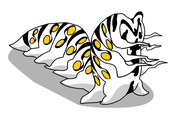
















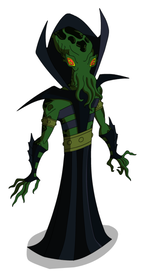
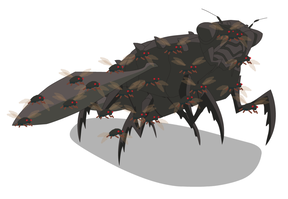



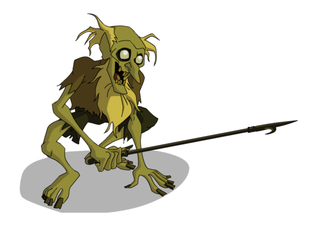





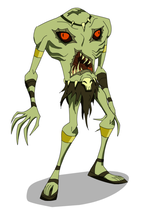




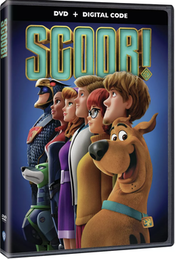
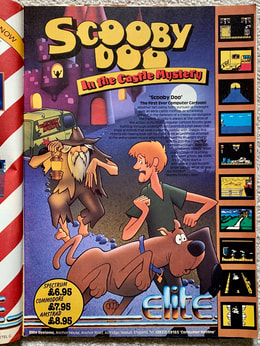
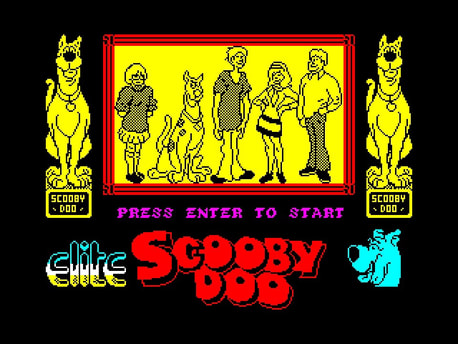
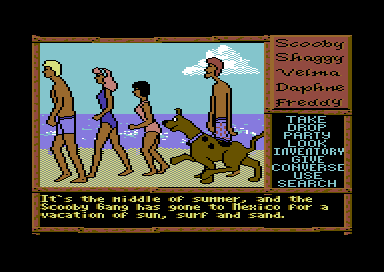
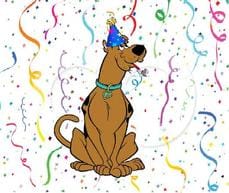
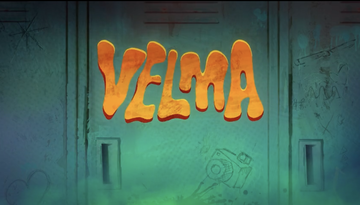
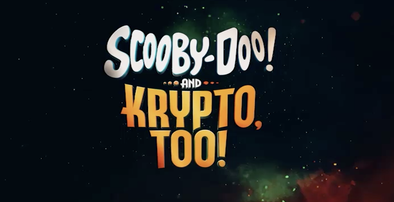
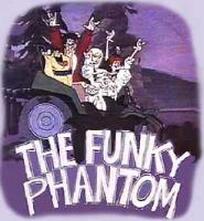
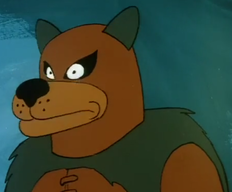
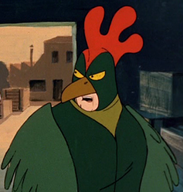
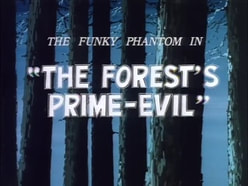
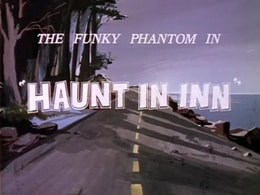
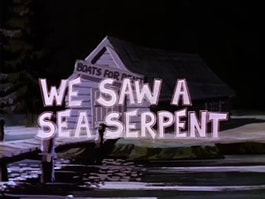
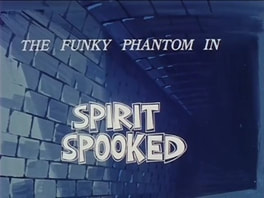
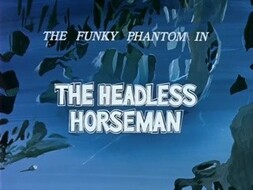
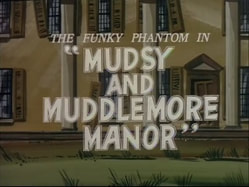
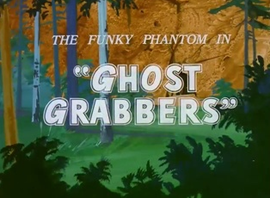
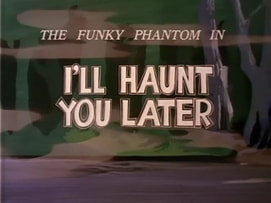
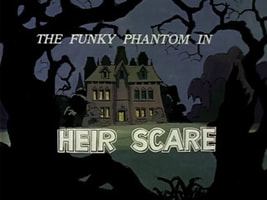
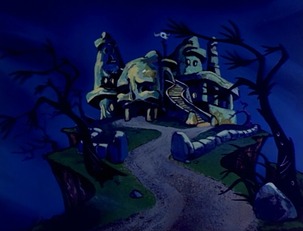
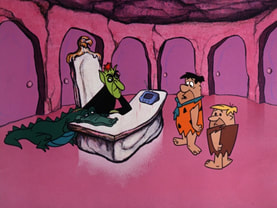
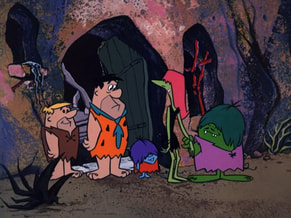
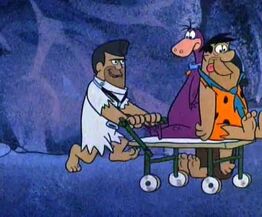
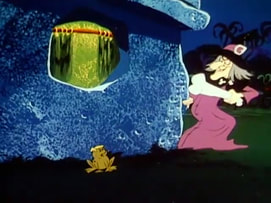
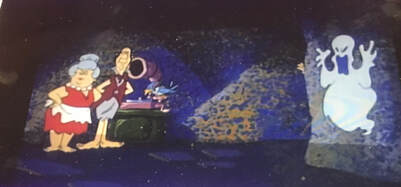
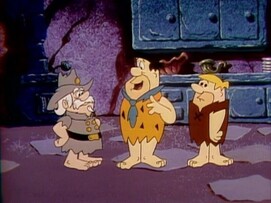
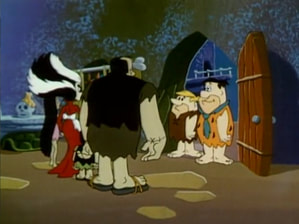

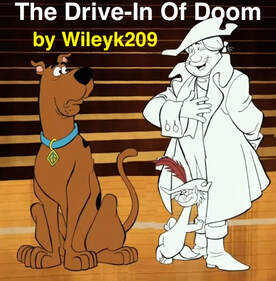
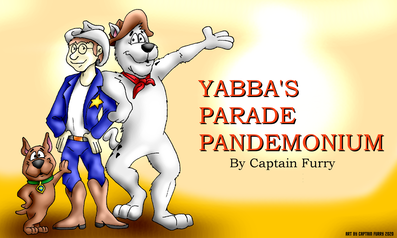
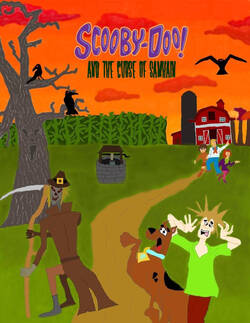
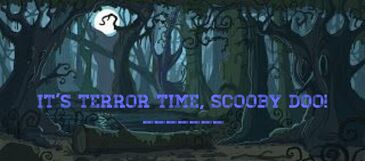
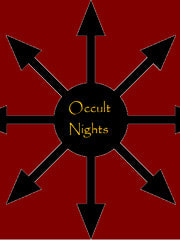
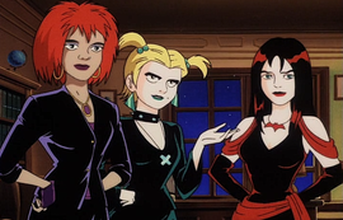
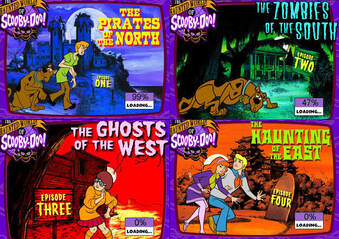
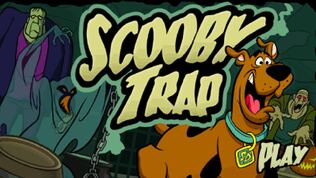
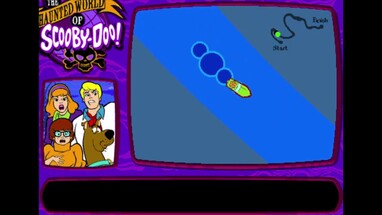
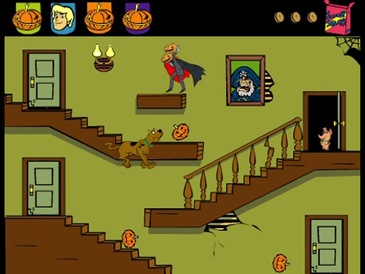
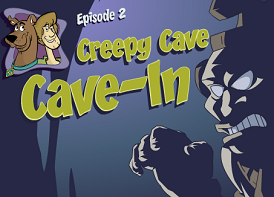
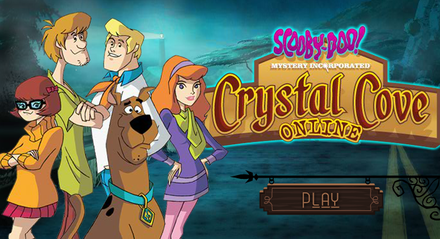
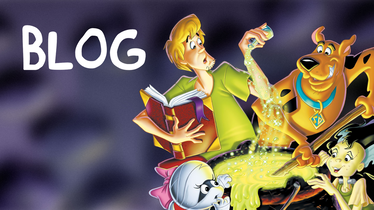
 RSS Feed
RSS Feed
